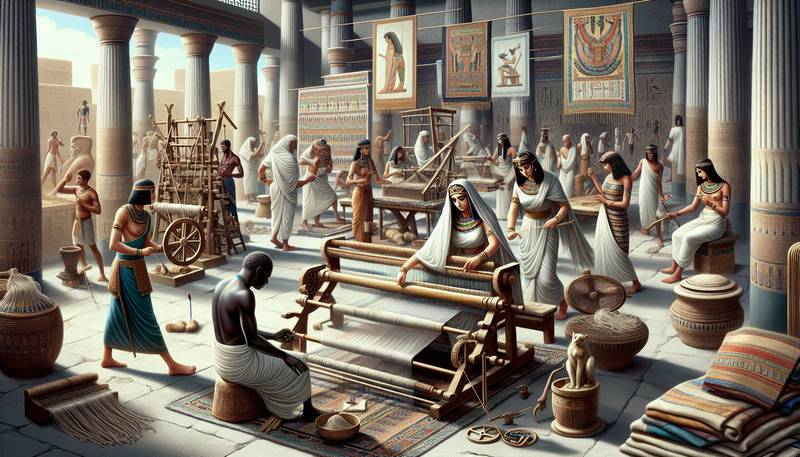Ancient Egyptian Linens: Pharaohs to Commoners

A Brief History of Egyptian LinensEgyptians were the first civilization to manufacture linen, which was then considered a luxury item. Ancient Egyptians would spin and weave flax fibers into a variety of fabrics, primarily used for clothing and home furnishings. Egyptian linens were made with a high degree of precision and craftsmanship, which allowed the fibers to be woven into intricate patterns and designs.
The production of linen was so important to the Egyptian economy that it even had its own deity – Neith, the goddess of weaving. Linen was used in various ways by both the rich and the poor in ancient Egypt, from the extravagant clothing worn by Pharaohs to the simple garments adorned by commoners.Ancient Linen Fashion: Dressing Like A PharaohPharaohs, the supreme rulers of ancient Egypt, were known for their elegant and elaborate clothing made of fine Egyptian linen. Pharaohs would wear a variety of garments, including kilts, tunics, and shawls, all made from the finest linen available. These garments were often adorned with intricate patterns and designs, as well as jewels and precious metals. The most famous example of ancient Egyptian linen clothing is the elaborate burial shroud of Tutankhamun, which was made from layers of fine linen and adorned with gold and jewels.Commoners in Linen: The Simple LifeWhile the luxurious linens worn by Pharaohs were reserved for the highest members of society, the common people of ancient Egypt were not without their share of linen garments. The most common type of linen clothing worn by commoners was a simple kilt, often referred to as a schenti. This garment was typically a single piece of linen wrapped around the waist and held in place by a belt or sash. Some commoners would also wear a linen tunic over their kilt for added modesty and protection from the sun.
Although the linen garments worn by commoners were far less extravagant than those of the Pharaohs, they still showcased the quality and craftsmanship of Egyptian linen production. In fact, many commoners would take great pride in their linen clothing, ensuring that it was kept clean and well-maintained.Egyptian Linens at Home: From Bedsheets to TableclothsIn addition to clothing, linen was also used extensively for home furnishings in ancient Egypt. Bed linens were made from soft, high-quality linen, ensuring a comfortable and luxurious sleeping experience for both the rich and the poor. Linen sheets were often dyed vibrant colors, such as red or blue, and featured intricate patterns and designs.
Table linens were another important aspect of ancient Egyptian households. Linen tablecloths and napkins were used during meals to add an air of sophistication and elegance. These linens were often adorned with intricate patterns and designs, showcasing the skilled craftsmanship of Egyptian weavers.Religious Significance of Linen in Ancient EgyptThe use of linen in ancient Egypt was not solely reserved for clothing and home furnishings. Linen also held deep religious significance and was used in various rituals and ceremonies. For instance, linen bandages were used to wrap mummies during the embalming process, and linen was also used to create religious scrolls.
The religious significance of linen can be traced back to its association with the goddess Neith. According to Egyptian mythology, Neith was the first being to ever exist and was responsible for creating the universe. As the goddess of weaving, Neith was believed to have created the world by spinning and weaving the fibers of existence, with linen being the physical embodiment of this divine act.Legacy of Egyptian Linen: An Enduring TraditionThe tradition of Egyptian linen production continues to this day, with modern Egyptian linens being renowned for their quality and craftsmanship. The legacy of ancient Egyptian linen craftsmanship is showcased in the countless artifacts and textiles that have been uncovered by archaeologists over the centuries. These artifacts serve as a testament to the importance of linen in ancient Egyptian culture and the extraordinary skill of its weavers.
In conclusion, the production of linen played a significant role in the development of ancient Egyptian civilization, influencing everything from fashion and home furnishings to religious practices and ceremonies. The enduring legacy of Egyptian linen craftsmanship is still admired and sought after today, making it one of the most enduring and fascinating aspects of this ancient culture.
|
|








